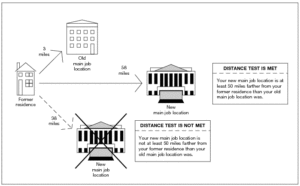How To Report A 1099-A

If you borrow money from a lender to purchase a property, the lender may require the loan to be secured by the purchased property. If the lender later acquires the secured property from you or has reason to know that you abandoned or stopped using the secured property, the lender may send you a Form 1099-A (PDF), Acquisition or Abandonment of Secured Property. So just how do you then use this from to report the sale to the IRS? What types of tax consequences are involved? Is there different treatment if the form is issued in connection with you principal residence versus a rental property? Read on to find out.
Property Sales and Capital Gains
When a property is foreclosed or abandoned, it is treated as a sale from a tax standpoint. This means that one will have to calculate what their gain or loss on the disposition of the property is. This is usually calculated by taking the sales price and subtracting the cost (or basis) in the property. The only problem is that unlike a normal sale, there’s no “selling price” with regards to what the lender paid to buy the property back from you. This is where Form 1099-A comes into play.
The Information on Form 1099-A
Form 1099-A provides you with the date of sale and the “selling price” of the property. Taxpayers will use either the fair market value of the property or the outstanding loan balance on the property for the selling price. Both these figures are reported on the form.
- If the loan is recourse (one where the borrower is personally liable for the balance), the sales price will be the lesser of outstanding debt reduced by any amount for which the taxpayer remains liable, or FMV of property
- If the loan is non-recourse, the sales prices will be the full amount of debt regardless of the FMV of property
While this is not an absolute indicator, the loan was probably a recourse loan if the bank has checked “yes” in Box 5, which asks “Was borrower personally liable for repayment of the debt?”
Reporting the Sale
Assuming the foreclosed/abandoned property was your personal residence, you must prepare and file Form 8949 and Schedule D with your tax return. Use the date of the foreclosure in Box 1 of the 1099-A as your date of sale. Then indicate the selling price. This will be either the amount in Box 2 or the amount in Box 4.
Calculate your gain by comparing the “selling price” you used to your purchase price, which is your cost basis in the property. The purchase price and date can be found on the HUD-1 closing statement you received when you purchased the property. The difference between the selling price and your cost basis is your gain or loss. However, if you have a gain, you may be able to exclude it so that it’s not taxable. If you have a loss, it will be considered a a “non-deductible loss” because it is personal in nature. The following post will go into greater detail.
Investment Properties
If the foreclosed property was used as a rental, then you will need to use Form 4797. For those who have had a rental property foreclosed upon, we advise them to seek assistance from a tax professional because there are additional factors to take into consideration, such as depreciation recapture, passive activity loss carryovers and reporting any final rental income and expenses on Schedule E.
Do You Need Help Reporting Your 1099-A?
If you’ve received a form 1099-A and don’t feel like dealing with the hassle of reporting it, why not give us a call? We’ve handled this situation numerous times and would be happy to assist you. Just shoot us an email via the address below or call us at 773-239-8850.







